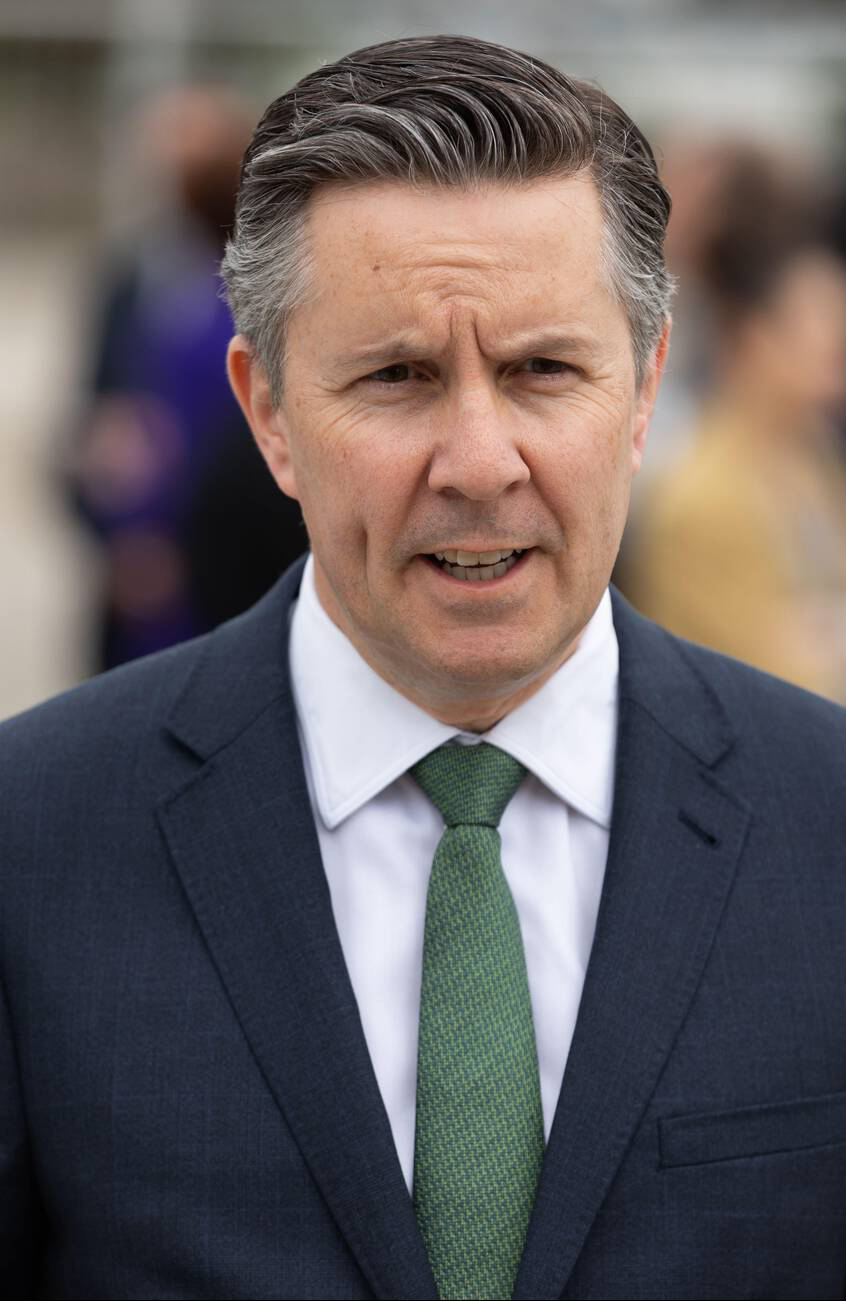Collaboration with Primary Health Networks can unlock new pathways for pharmacists – and help to address Australia’s primary healthcare crisis.
With bulk billing rates in decline,1 waiting times to see a general practitioner (GP) on the rise2 and just 14% of medical graduates choosing to work in general practice, primary care in Australia is in ‘the worst shape it has been in 40 years’.3
Add to this a growing and ageing population, increasing disease rates, disparities in access to care and high levels of stress and burnout felt by GPs and other health professionals,4 and it is a problem that urgently needs a solution.
The idea that people have a GP they routinely consult for increasingly complex multiple health needs is becoming outdated. In the 2021–22 financial year there were 8.8 million emergency department presentations nationally, only slightly less than the previous year.5 Waiting times were longer than in previous years. And 45% of cases were deemed non-urgent, which includes lingering rashes and minor aches and pains, as well as semi-urgent conditions, which can include sprained ankles, migraines and foreign bodies needing extraction.
People living in the lowest and second lowest socioeconomic areas were most likely to visit an ED.6 Australia’s health 2022, a 2-yearly health report card, revealed in 2020–21 that 11.6 million, or 47% of the population, was estimated to have one or more common chronic health conditions such as diabetes, cancer, mental and behavioural conditions and chronic kidney disease.7 And just last month a new federal Government-commissioned independent report into the universal healthcare system by health economist Dr Pradeep Philip found Medicare is so poorly structured and loosely scrutinised that it is no longer fit for its intended purpose. ‘The legislative basis for Medicare is fast becoming out of date, unable to reflect the changing health needs and modes of health service delivery in Australia,’ Mr Philip says.8
Pharmacists are also experiencing a surge in people requesting emergency supply because their current care pathways don’t provide the access they need.
A strong primary care system isn’t simply a ‘nice to have’. Evidence shows primary care helps avoid unnecessary hospitalisations, improves population health and makes access to health care more equitable.9 Recognising this, the federal Government established the Strengthening Medicare Taskforce in 2022 to help address some of Australia’s primary care problems. It has committed $750 million over the next 3 years to fund some of the most urgent recommendations from the taskforce, which were set out in its recent report.1
One of the primary recommendations of the taskforce is the need to encourage multidisciplinary team-based care, with healthcare professionals including GPs, pharmacists, nurses, Aboriginal and Torres Strait Islander health workers and others working to their full scope of practice. One key way to achieve this, the report states, is by strengthening Primary Health Networks (PHNs) and ‘increasing the commissioning of allied health and nursing services by PHNs to supplement general practice teams’.1

‘The needs of patients today are very different to the 1980s [when Medicare was established]. Back then, most presentations to a GP were episodic … Now we’re dealing with much more chronic disease, ongoing need and older Australians who tend to have more than one healthcare condition,’ Minister for Health and Aged Care Mark Butler told a press conference in February when launching the report.10
‘The recommendations from this report are firstly, the critical need to use our health workforce more fully, and to allow all of our healthcare professionals … to operate at the full scope of their practice, to use all of their skills and all of their training, rather than being restricted by outdated regulations.’10
This includes pharmacists, who are already valuable members of the primary care team but have the potential to play an even greater role by working with PHNs on innovative care solutions.
Why Primary Health Networks?
Australia’s 31 PHNs were set up in 2015 to help streamline health services and ensure people receive the right care, in the right place, at the right time.9 These independent, regional organisations don’t provide services themselves, but commission them based on the needs of their area and work with providers to ensure they deliver quality care.
According to the Department of Health and Ageing PHNs assess the needs of their community and commission health services so that people in their region can get coordinated health care where and when they need it.’9

‘I would describe PHNs as the glue between primary and secondary care,’ says Angus Thompson MPS (he/him), Pharmacist Clinical Editor at Primary Health Tasmania. ‘They identify unmet health needs within their jurisdictions and tailor solutions to them … and work to bridge the gap between GPs, hospitals and other allied health providers.’
PHNs have multiple funding streams, including those dedicated to providing specific services, such as immunisation or digital health support for primary care, and others to address identified gaps in their local area. They are a ‘connector’ of different levels of differently funded health care in our regions. For instance, in the past hospitals did not properly connect with primary care. Now PHNs use local knowledge to improve that with wide-ranging services.

‘We are called on to explore innovative ways to partner across the health system to enable connected primary care,’ says Mike Bosel (he/him), CEO of Brisbane South PHN.
‘We’re not a direct provider of services, instead we partner across all levels of the health system to commission services and initiatives with a focus on addressing health inequities and inequalities in our local communities.’
Current norms may be challenged after the federal Budget this month. PSA’s General Manager Policy and Program Delivery Chris Campbell MPS believes that by working to full scope of practice, pharmacists will be able to further significantly contribute to health care, regardless of where they practice. ‘The incredible insight from 31 PHNs can help target where pharmacists can best contribute, and what the immediate and emerging health needs of that area are.
‘That can mean ramping up the role of pharmacists in community pharmacy for triage and referral, and through to embedding pharmacists into care teams in general practice, aged care and Aboriginal Health Services,’ he says.
A track record of success
The PSA has partnered with PHNs to commission projects that meet their community’s needs, integrate pharmacy further into primary care and make use of pharmacists’ skills.
This includes programs to embed pharmacists in residential aged care facilities, which led to a federal government commitment to provide $345.7 million in funding to support pharmacists in aged care.12
Another successful program is the Palliative Care Access to Core Medicines Project,13 which PSA has worked on with PHNs including North Western Melbourne (NWMPHN) and South Eastern NSW. This aims to support palliative care in the community and help minimise the suffering associated with end-of-life symptoms by improving access to five subcutaneous medicines from the Core Palliative Care Medicines List.

‘We also looked at how we might increase the early notification of pharmacists by doctors when a person has been diagnosed with a life-limiting illness,’ says Megan Tremlett MPS (she/her), PSA Senior Pharmacist – Consulting, who worked on the project.
‘The COVID pandemic really highlighted the role of allied health and the need for all the different disciplines in the primary health sector to work together more closely … Sometimes pharmacists only become aware of someone who is palliative when they receive a prescription for the last days of life medicines, whereas if they are notified a lot earlier, it enables pharmacists to better support that patient and their family.’
Other programs currently underway include North Coast Health Connect,15 which is a 24/7 triage service that offers appointments with community pharmacists (see p24) and the North West Melbourne Pharmacotherapy Network,16 which provides support for GPs, pharmacists and health professionals to prevent and manage opioid dependence in the community.
Pharmacists in general practice
In Brisbane, Mr Bosel sees great value in collaborating with pharmacists to improve outcomes for those in his PHN jurisdiction.
‘Our aim as a region is to be the #1 medicine safety area of Australia, and we have some exciting evidence translation projects in the pipeline which aim to reduce medicine-related hospitalisations. Without collaborating with pharmacy professionals, we risked not understanding how acute the need is for improvements in medicine safety for better patient care,’ he says. Brisbane South PHN has also worked with PSA to embed pharmacists in general practice, with nine locations now employing a total of 11 pharmacists.
‘We developed a business model [in collaboration with PSA] that creates a sustainable business case for pharmacists in general practice within the current funding arrangements. This was no small feat, and now we’re able to roll out and build upon our practice pharmacist workforce in our region,’ he says.
NWMPHN CEO Christopher Carter says the Pharmacists in General Practice program has not only increased patient safety and staff knowledge, but can also boost the bottom line. ‘Evaluation has shown that the wages paid to the pharmacist can be at least partially amortised because they can increase the billable hours of a GP by performing activities that the GP may have previously undertaken during a consultation,’ he says.
‘Examples of the roles that pharmacists can undertake that save the GP time include medicines reconciliation services, transition of care management and education about medicines. The GP can then use the time they save to increase their billable appointments.’
While these programs are successful, pharmacists have the skills to do much more within general practice but are prevented from doing so by funding arrangements and regulations, according to a report released by the Grattan Institute in December.18
The evidence for pharmacists doing tasks such as writing new prescriptions and reissuing prescriptions for long-term conditions, implementing chronic disease care plans developed by GPs, treating minor ailments, ordering lab tests and providing home visits, palliative care and prenatal care is ‘overwhelmingly positive, confirming their safety, efficacy and cost-effectiveness,’ the authors state. ‘But Australia is behind other countries in expanding the scope of pharmacists, and has fewer than 100 working in general practice, compared with thousands in the UK.’
Looking ahead
As the health needs of the 1.9 million people within NWMPHN’s catchment change, Mr Carter says it’s important to collaborate with pharmacists to create fit-for-purpose programs. Building closer relationships between pharmacy and general practice is a ‘partial solution’ to some workforce challenges facing primary care, as will be sharing some routine drug administration tasks. For example, he says the PHN is exploring opportunities for pharmacists to administer long-acting injectable buprenorphine, ‘easing the strain on some GPs who may have limited capacity to conduct pharmacotherapy and ensuring patient safety and care’.
The NWMPHN is eager to hear more in the federal Budget about ‘innovative opportunities to partner with pharmacists’.
Mr Bosel is also enthusiastic about the future role for pharmacists within PHNs and primary care. ‘PHNs don’t have a dedicated stream of funding for community pharmacy or pharmacists, but we hope to see this change in the future to recognise the role that pharmacists play in delivering high-quality primary health care.
‘As populations and communities change and evolve, so too do the ways in which people interact with health care services … Brisbane South PHN recognises that wherever medicine is, that’s where a pharmacist needs to be.’
References
- Strengthening Medicare Taskforce. Strengthening Medicare Taskforce report. 2022. At: www.health.gov.au/sites/default/files/2023-02/strengthening-medicare-taskforce-report_0.pdf
- Australian Bureau of Statistics. More people waiting longer to see GPs for urgent medical care. 2022. At: www.abs.gov.au/media-centre/media-releases/more-people-waiting-longer-see-gps-urgent-medical-care
- Australian Government Department of Health and Aged Care. Strengthening Medicare for the future. 2023. At: www.health.gov.au/ministers/the-hon-mark-butler-mp/media/strengthening-medicare-for-the-future
- Smallwood N, Karimi L, Bismark M, et al. High levels of psychosocial distress among Australian frontline healthcare workers during the COVID-19 pandemic: a cross-sectional survey. Gen Psychiatr 2021;34.
- Australian Institute of Health and Welfare. Emergency department care. 2023. At: www.aihw.gov.au/reports-data/myhospitals/sectors/emergency-department-care
- AIHW. Emergency department care activity. 2023. At: www.aihw.gov.au/reports-data/myhospitals/intersection/activity/ed
- AIHW. AIHW releases 2022 report card on the health of Australians. 2022. At: www.aihw.gov.au/news-media/media-releases/2021/july/aihw-releases-2022-report-card-on-the-health-of-au ]
- Chrysanthos N. Unfit Medicare system haemorrhaging upto $3 billion a year. Sydney Morning Herald 2023. At: www.smh.com.au/politics/federal/unfit-medicare-system-haemorrhaging-up-to-3-billion-a-year-20230403-p5cxnd.html
- Australian Government Department of Health and Aged Care. What Primary Health Networks are. 2021. At: www.health.gov.au/our-work/phn/what-PHNs-are
- Mark Butler MP. Minister for Health and Aged Care – press conference – 3 February 2023. 2023. At: www.health.gov.au/ministers/the-hon-mark-butler-mp/media/minister-for-health-and-aged-care-press-conference-3-february-2023
- Lane RI, Russell GM, Francis C, et al. Evaluation of the Primary Health Networks program: final report. Ernst & Young. 2018. At: www.health.gov.au/internet/main/publishing.nsf/Content/PHN-Reviews-and-Evaluations
- Pharmaceutical Society of Australia. PSA welcomes Government’s commitment to improve medicine safety in Aged Care. 2022. At: www.psa.org.au/psa-welcomes-governments-commitment-to-improve-medicine-safety-in-aged-care/
- Pharmaceutical Society of Australia. North Western Melbourne Primary Health Network Palliative Care Access to Core Medicines (PCAM) Project. At: www.psa.org.au/nwmphn-pcam/
- Ball R, McMaugh J, Meredith G, et al. Conference abstract: Integrating non-dispensing pharmacists into the general practice team. Int J Integr Care 2020;20(S1):57.
- North Coast Health Connect. How the service works. At: northcoasthealthconnect.org.au/
- North West Melbourne Primary Health Network. Pharmacotherapy Network. At: www.nwmphn.org.au/about/partnerships-collaborations/pharmacotherapynetwork/
- Breadon P, Romanes D, Fox L, et al. A new Medicare: strengthening general practice. Grattan Institute. 2022. At: grattan.edu.au/wp-content/uploads/2022/12/A-new-Medicare-strengthening-general-practice-Grattan-Report.pdf
- Healthy North Coast. North Coast Health Connect launches in Kempsey. 2023. At: hnc.org.au/media/north-coast-health-connect-launches-in-kempsey/






 ‘We’re increasingly seeing incidents where alert fatigue has been identified as a contributing factor. It’s not that there wasn’t an alert in place, but that it was lost among the other alerts the clinician saw,’ Prof Baysari says.
‘We’re increasingly seeing incidents where alert fatigue has been identified as a contributing factor. It’s not that there wasn’t an alert in place, but that it was lost among the other alerts the clinician saw,’ Prof Baysari says.





